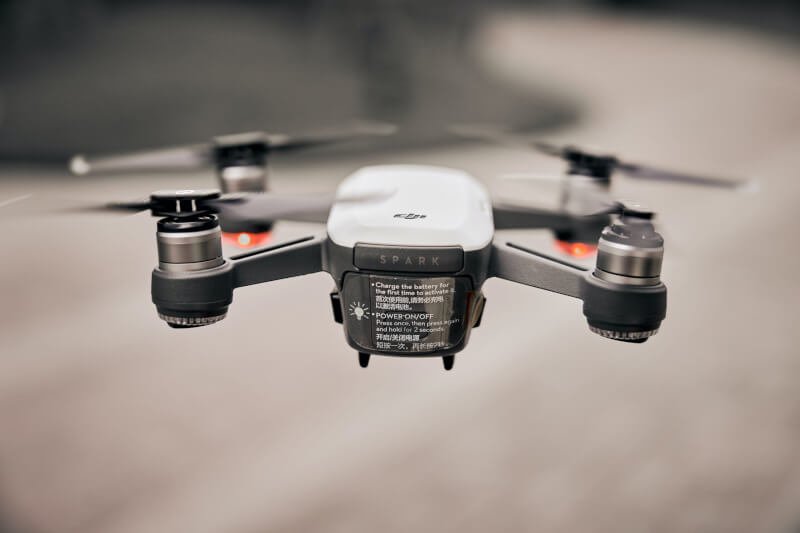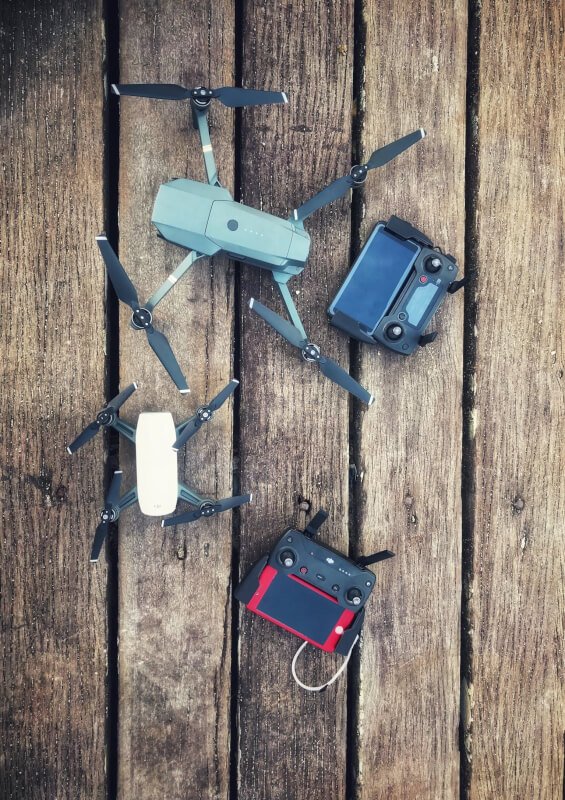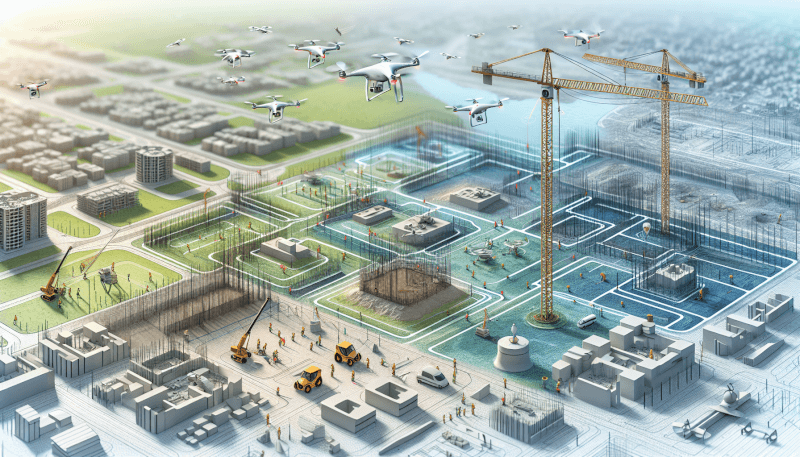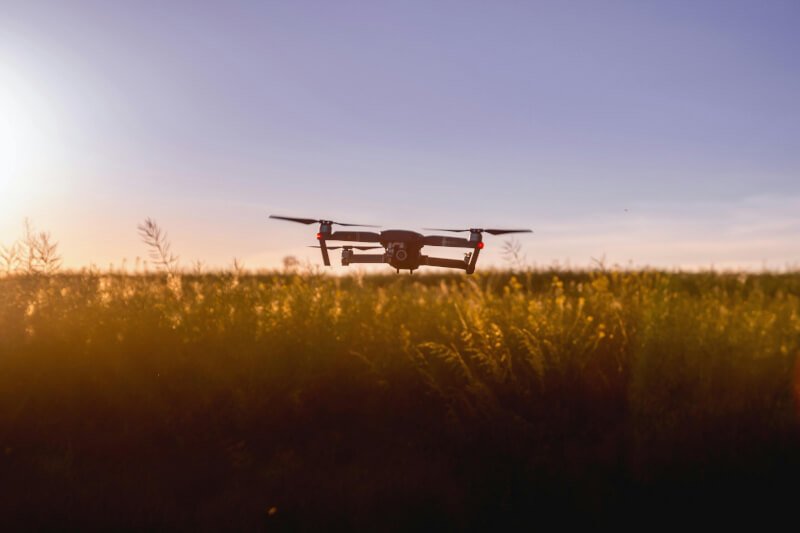In today’s rapidly evolving world, drones are revolutionizing the way we approach construction and infrastructure industries. These small, unmanned aerial vehicles are making significant strides in terms of efficiency, safety, and accuracy. From surveying large areas in a fraction of the time it would take with traditional methods, to inspecting hard-to-reach areas with ease, drones are proving to be invaluable tools in the construction and infrastructure sectors. In this article, we will explore the various ways drones are impacting these industries and delve into the benefits they bring to the table. So, fasten your seatbelts and get ready to soar into the exciting world of drone technology!

Enhanced Surveying and Mapping
Drones have revolutionized the way surveying and mapping are conducted in the construction and infrastructure industries. With their ability to capture high-resolution images and videos from above, they provide an accurate and efficient way to obtain topographic surveys. Traditional land surveying methods can often be time-consuming and labor-intensive, requiring surveyors to physically visit the site and collect data manually. However, with drone technology, you can now perform land surveying tasks in a fraction of the time, saving both time and resources.
Not only do drones provide a faster and more efficient way to conduct surveys, but they also offer the advantage of high-resolution 3D mapping. By combining aerial imagery with advanced software, drones can create highly detailed and accurate 3D models of construction sites, infrastructure projects, and existing structures. This enables surveyors, architects, and engineers to have a better understanding of the site and make more informed decisions during the design and planning stages.
Using drones for site analysis also enhances the overall efficiency of the surveying and mapping processes. With a drone, you can quickly capture data from multiple angles and viewpoints, allowing for a comprehensive and detailed analysis of the site. This helps identify potential challenges and obstacles early on, resulting in better project planning and decision-making.
Aerial Inspection and Monitoring
Aerial inspection and monitoring have become an essential part of maintaining the safety and integrity of structures within the construction and infrastructure industries. Drones offer an efficient and cost-effective way to inspect various types of structures, including buildings, bridges, towers, and pipelines. Traditional inspection methods often require manual labor, specialized equipment, and sometimes even the use of cranes and scaffolding. However, drones can easily access hard-to-reach areas, reducing the need for human intervention and minimizing the risk to workers.
Regular infrastructure maintenance is crucial to ensure the longevity and safety of the built environment. Drones can help streamline this process by conducting routine inspections, identifying any signs of wear, damage, or deterioration. By detecting these issues in their early stages, preventative maintenance measures can be implemented, avoiding costly repairs and potential disruptions to operations.
Safety inspections of high-risk areas, such as construction sites, can also benefit from drone technology. Drones equipped with thermal imaging cameras can detect heat signatures and identify potential safety hazards, such as overheating electrical systems or leaking gas pipelines. This allows for immediate action to be taken and prevents accidents or mishaps before they occur.
Improved Construction Management
Drone technology has transformed the way construction projects are managed, from the initial planning stages to the final completion. With drones, project planning and design are enhanced by providing accurate and up-to-date data on the site conditions. By collecting aerial imagery and topographic data, planners and designers can gain a comprehensive understanding of the project site, allowing them to make more informed decisions about the layout, design, and logistics of the construction process.
Real-time progress tracking is another significant advantage of using drones in construction management. Drones can capture images and videos of the construction site at regular intervals, providing project managers with a visual record of the progress made. This allows for better monitoring of construction timelines and helps identify any delays or bottlenecks that may arise. By having access to real-time data, project managers can make adjustments and take proactive measures to ensure projects stay on track.
Drones also play a crucial role in monitoring material and equipment on construction sites. By tracking the movement and inventory of construction materials and equipment, project managers can optimize resource management and ensure that the right materials are available at the right time. This reduces inefficiencies, prevents delays, and ultimately leads to increased productivity on the construction site.
Furthermore, drones enhance communication and collaboration among project stakeholders. By sharing aerial imagery, videos, and 3D models, all parties involved in the project can have a clear and shared understanding of the construction progress and status. This facilitates effective communication, improves decision-making, and fosters collaboration, leading to a more efficient and successful construction process.
Enhanced Safety Measures
Safety is a top priority in the construction and infrastructure industries, and drones are playing a vital role in improving safety measures. By utilizing drones for identifying hazardous areas, workers can avoid entering potentially dangerous zones, minimizing the risk of accidents or injuries. Drones can survey the construction site or infrastructure project and identify areas with unsafe conditions, such as unstable ground or collapsing structures. This information allows construction teams to take the necessary precautions to ensure their safety.
Using drones for preventing accidents and mishaps is another significant benefit to the construction industry. Drones equipped with high-resolution cameras and sensors can detect potential safety hazards, such as loose scaffolding or unsafe working conditions. By identifying these risks in real-time, construction teams can take immediate action to rectify the issues, preventing accidents from occurring.
Drones also provide remote access to dangerous locations, eliminating the need for workers to physically access hazardous areas. In situations where it is unsafe or impractical for workers to enter certain areas, drones can be used to gather visual data or perform inspections. This reduces the risks associated with working in high-risk environments and ensures the safety of workers.
In the event of an emergency, drones can play a crucial role in improving emergency response. Equipped with cameras and sensors, drones can quickly assess the situation and provide updated information to emergency response teams. This enables faster and more accurate decision-making, leading to a more efficient emergency response and potentially saving lives.

Increased Efficiency and Productivity
Drones have significantly increased efficiency and productivity within the construction and infrastructure industries. By streamlining workflows, drones enable projects to be completed more quickly and effectively. Traditional methods, such as manual data collection and on-site measurements, can be time-consuming and labor-intensive. However, drones can collect data and perform tasks in a fraction of the time, allowing workers to focus on more critical aspects of the construction process.
Reduced time and labor costs are another advantage of using drones. With their ability to cover large areas quickly and efficiently, drones can significantly reduce the time needed to collect data or perform inspections. This not only saves time but also reduces labor costs, as fewer workers are required to complete the same tasks. This allows construction companies to allocate resources more efficiently and improve project profitability.
Drones also facilitate optimized resource management. By providing real-time data on material and equipment movement, project managers can ensure that resources are allocated effectively and that potential bottlenecks are identified and resolved promptly. This prevents delays and inefficiencies, leading to increased productivity on the construction site.
Additionally, drones can automate repetitive tasks, further enhancing efficiency and productivity. For example, drones can be programmed to perform regular inspections or data collection at predetermined intervals, eliminating the need for manual intervention. This automation frees up workers’ time, allowing them to focus on more specialized and critical tasks.
Improved Quality Control
Quality control is a crucial aspect of the construction and infrastructure industries, and drones have greatly improved the ability to maintain and ensure high-quality standards. Drones provide accurate measurement and documentation capabilities, allowing for precise monitoring and evaluation of construction processes. By capturing high-resolution images and videos, drones can record and document every stage of the construction process, providing a comprehensive record of work completed.
Monitoring construction standards is another area where drones excel. By comparing the actual construction progress with the predetermined standards and specifications, drones can identify any deviations or defects. This allows project managers and inspectors to take immediate action to rectify the issues and ensure that quality standards are met throughout the construction process.
Drones are also effective in identifying defects and errors in construction projects. By capturing detailed imagery and using advanced software, drones can detect any structural weaknesses, improper installation, or design flaws. This early detection enables corrective measures to be taken promptly, preventing further complications or costly repairs in the future.
By improving quality control through the use of drones, construction and infrastructure projects can achieve higher levels of customer satisfaction. Clients can have confidence in the accuracy and precision of the work being performed, leading to greater trust and repeat business.

Environmental Impact and Sustainability
The environmental impact of construction and infrastructure projects is a growing concern, and drones play a crucial role in monitoring and minimizing this impact. Drones can be used to monitor environmental concerns such as air and water quality, soil erosion, and habitat preservation. By collecting data and conducting aerial surveys, drones provide valuable information that can be used to develop sustainable strategies and mitigate any negative environmental effects.
Reducing energy consumption is another area where drones contribute to sustainability efforts in the construction industry. By using drones to perform tasks that would typically require heavy machinery or vehicles, energy consumption can be significantly reduced. This leads to lower carbon emissions and a greener construction process.
Drones also optimize resource usage by providing real-time data on material usage, waste generation, and recycling efforts. By monitoring and analyzing this data, construction companies can identify areas for improvement and implement strategies to reduce material waste. This not only reduces the environmental impact but also saves costs associated with material procurement and disposal.
Enhanced Communication and Visualization
Effective communication is essential in any construction or infrastructure project, and drones enhance communication and visualization capabilities. Drones provide an improved way to present projects by capturing high-resolution images and videos from various angles and perspectives. This allows project stakeholders to have a more immersive and realistic understanding of the project, leading to better decision-making and collaboration.
Drones also enhance stakeholder engagement by providing visual data that can be easily shared with clients, investors, and regulatory bodies. By sharing detailed imagery, 3D models, or virtual reality simulations, stakeholders can better visualize the project and provide valuable input and feedback. This improves the overall communication process and ensures that all parties are aligned with the project goals and objectives.
Furthermore, drones enable effective communication with clients throughout the construction process. By sharing real-time progress updates, aerial imagery, and 3D models, clients can have a better understanding of the project’s status and any challenges or opportunities that may arise. This transparency and open communication foster trust and collaboration, resulting in more successful and satisfying projects.
Integration of virtual reality (VR) and augmented reality (AR) technologies with drones further enhances communication and visualization capabilities. VR and AR allow users to experience the project in a simulated environment or overlay digital information onto the physical world. This immersive experience provides a unique way to visualize and interact with the project, enabling better planning, design, and decision-making.

Drone-Based Material Delivery
Drones are not only transforming surveying and inspection processes but are also revolutionizing material delivery in the construction and infrastructure industries. Drone-based material delivery offers an efficient and cost-effective way to transport small packages, tools, or equipment on construction sites. Traditional methods, such as manual labor or the use of heavy machinery, can be time-consuming and cumbersome. However, drones can navigate through congested areas and quickly deliver materials with minimal human intervention.
Remote delivery in difficult terrain is another significant advantage of using drones. In areas with challenging landscapes or limited accessibility, drones can provide a reliable transportation method, bypassing the need for traditional ground vehicles or specialized equipment. This ensures that materials can be delivered to remote or hard-to-reach locations, supporting construction projects in challenging environments.
By reducing the need for human intervention in material delivery, drones contribute to improved safety and efficiency. Workers no longer need to spend time and effort manually transporting materials, allowing them to focus on more critical tasks. Additionally, the use of drones minimizes the risk associated with heavy lifting or injury during material delivery, promoting a safer work environment.
Challenges and Considerations
While the use of drones in the construction and infrastructure industries offers many benefits, there are several challenges and considerations that need to be addressed. One of the primary challenges is the regulatory framework and legal compliance surrounding drone operations. Each country may have different rules and regulations regarding drone usage, and it is essential for construction companies to be aware of and comply with these regulations. This includes obtaining the necessary licenses, permits, and authorizations for drone operations.
Privacy and data security concerns are also important considerations when using drones. Drones equipped with cameras and sensors can capture sensitive information, including personally identifiable information or confidential project details. Construction companies must have appropriate protocols in place to protect data privacy and ensure that collected data is used responsibly and securely.
Training and skill requirements are another consideration when adopting drone technology. Operators need to be trained and certified to operate drones safely and effectively. Additionally, construction team members may need to acquire new skills or adapt their existing skills to work alongside drones. This requires investing in training programs and ensuring that workers have the necessary knowledge and expertise to utilize drones in a construction environment.
Lastly, the risk of technical failures and accidents is a concern when using drones. Malfunctioning equipment, software glitches, or operator errors can lead to accidents or damage to property. Construction companies should have contingency plans and emergency response procedures in place to address potential technical failures or accidents. Regular maintenance and inspections of drones are essential to ensure their safe and reliable operation.
In conclusion, the impact of drones on the construction and infrastructure industries cannot be overstated. From enhanced surveying and mapping to improved construction management, safety measures, and beyond, drones are transforming how projects are planned, executed, and monitored. The increased efficiency, productivity, and quality control achieved through drone technology benefit both construction companies and their clients. While there are challenges and considerations to address, the potential benefits make the integration of drones in the industry an exciting and promising development. With continued advancements in drone technology and a focus on responsible and sustainable usage, the future of the construction and infrastructure industries is looking brighter than ever with drones at the forefront.



